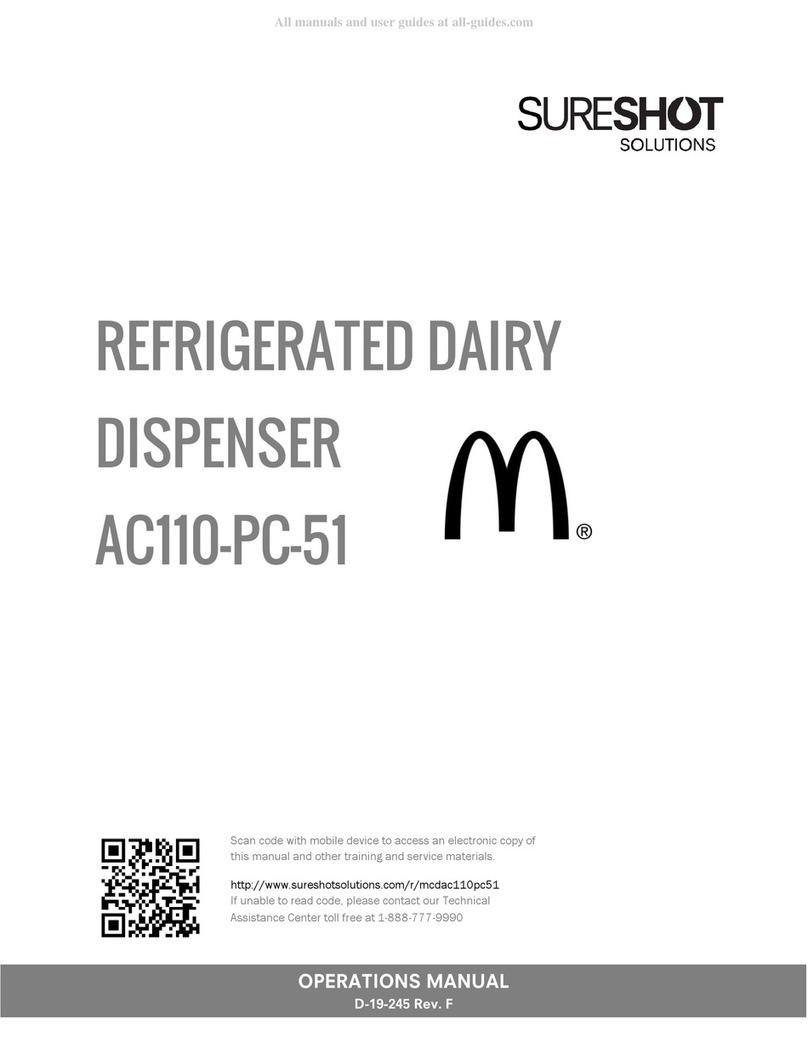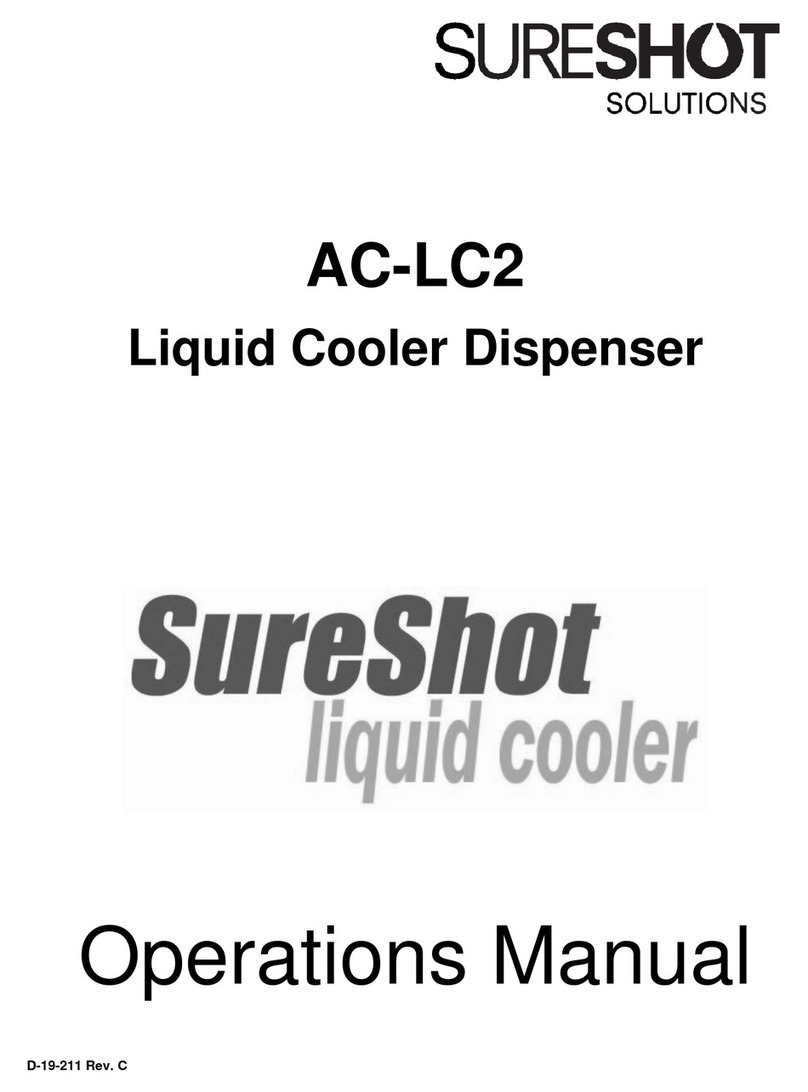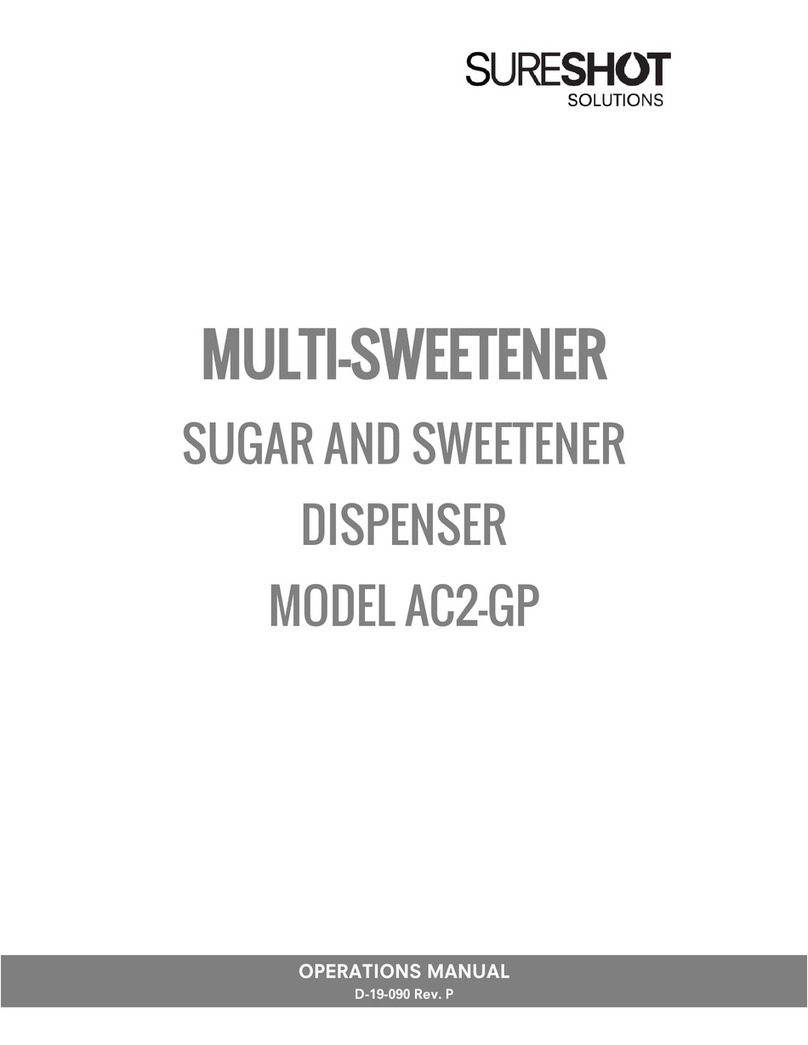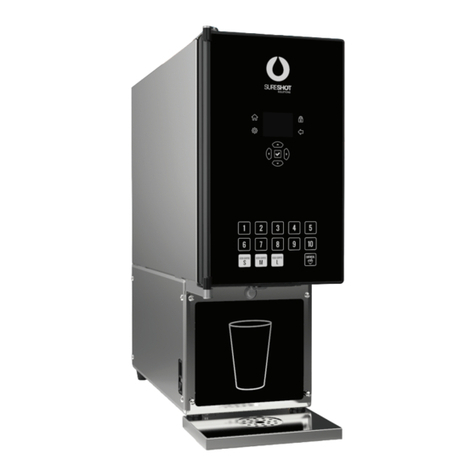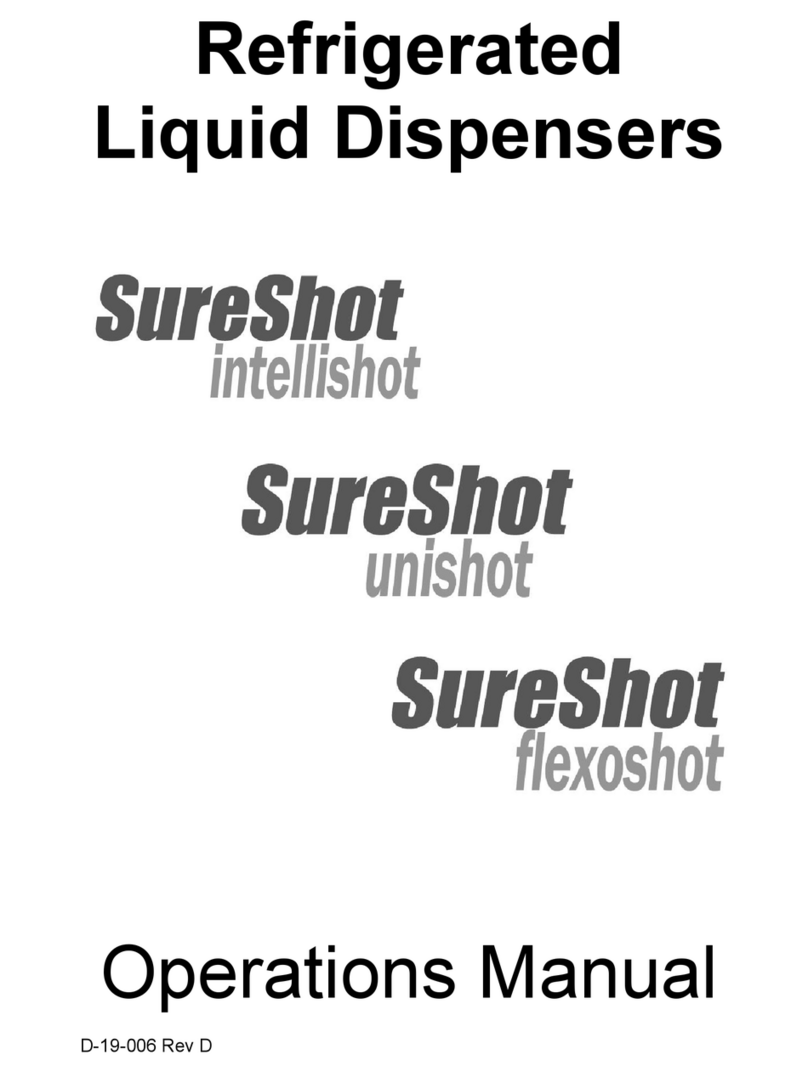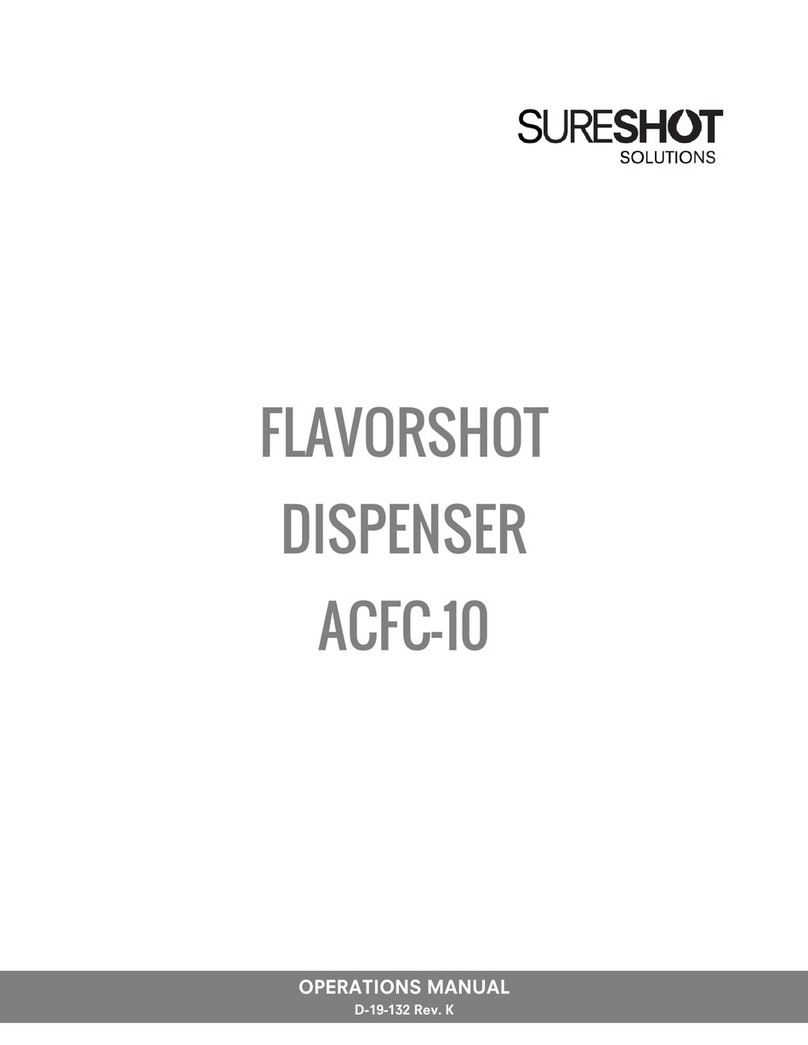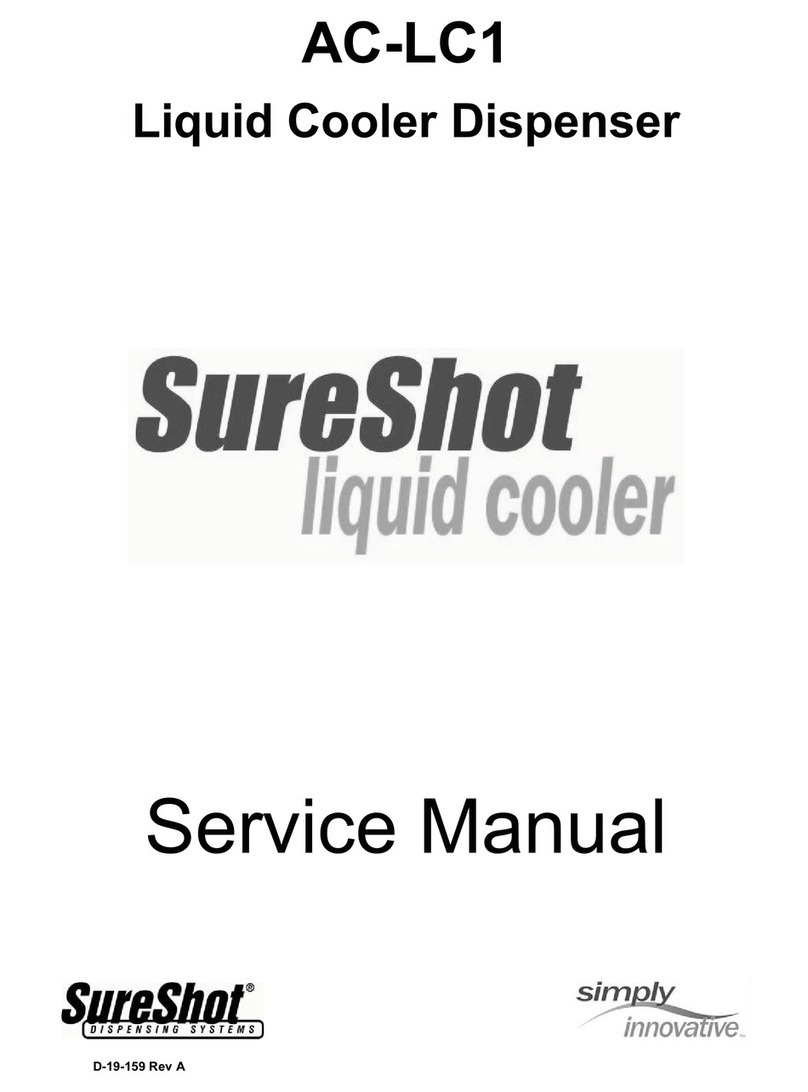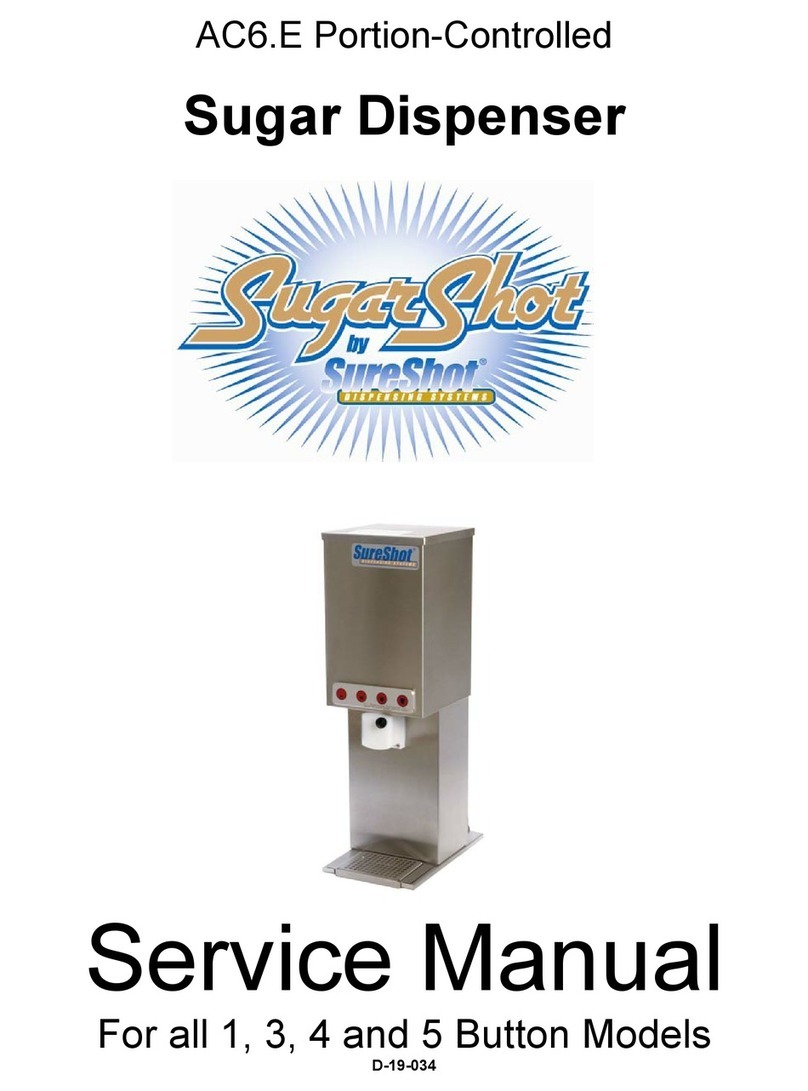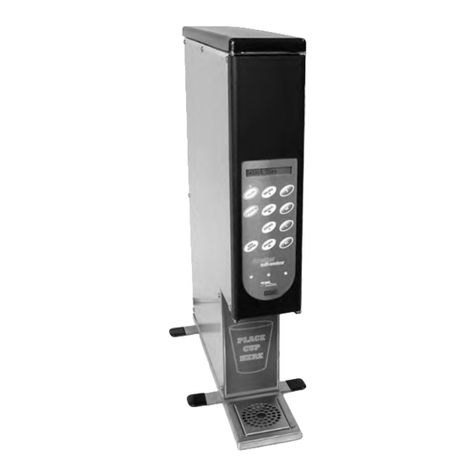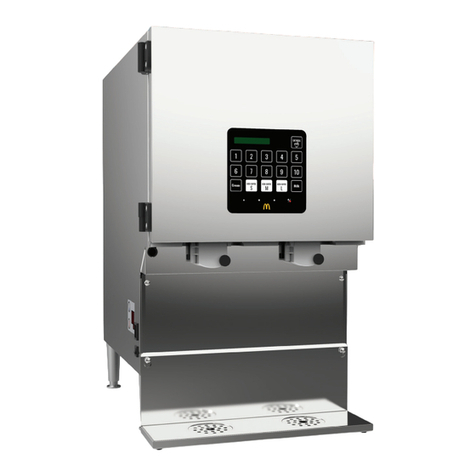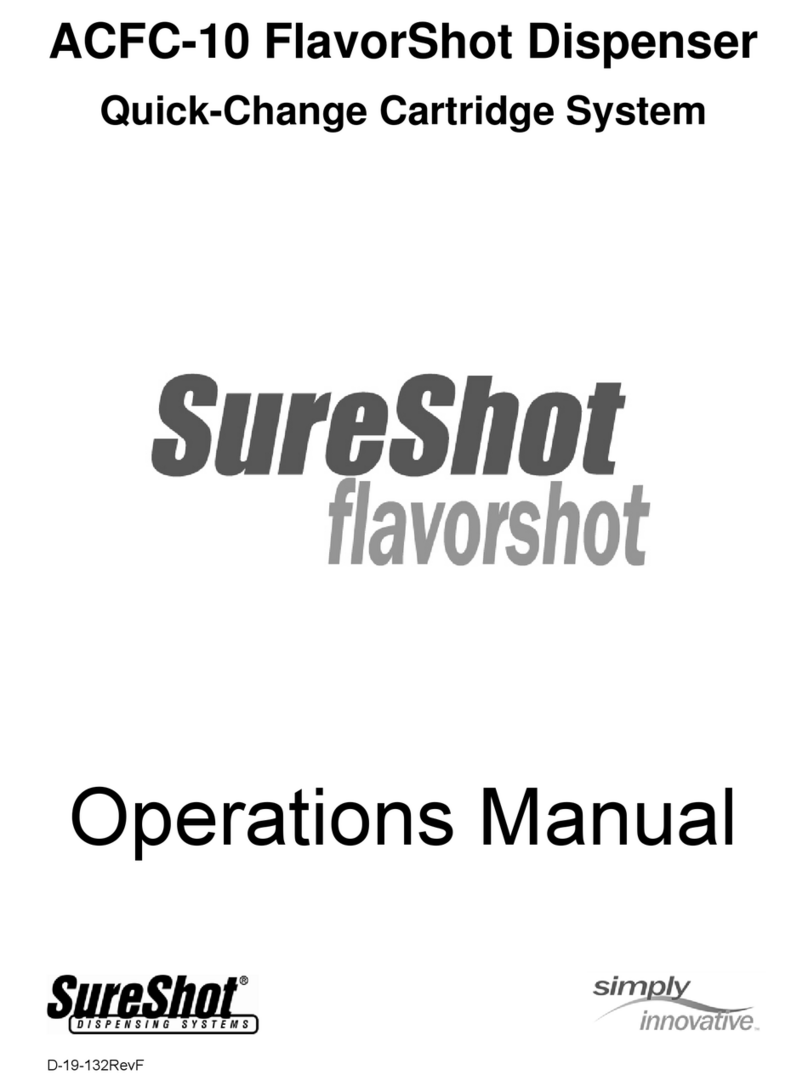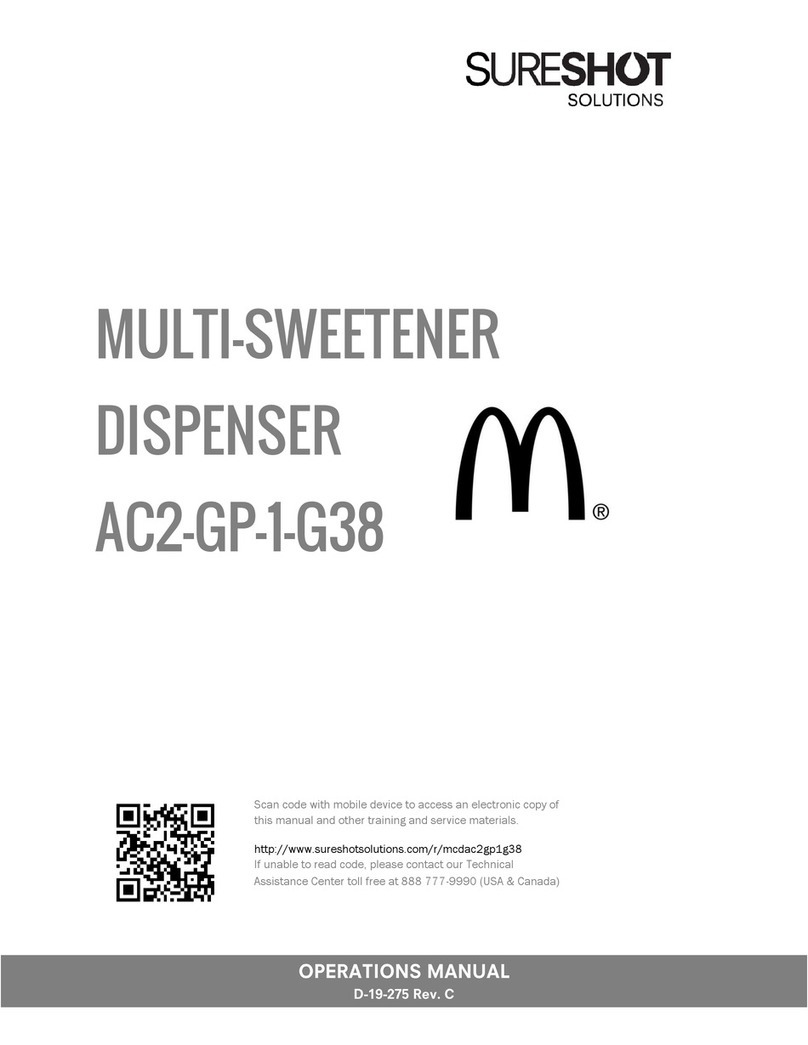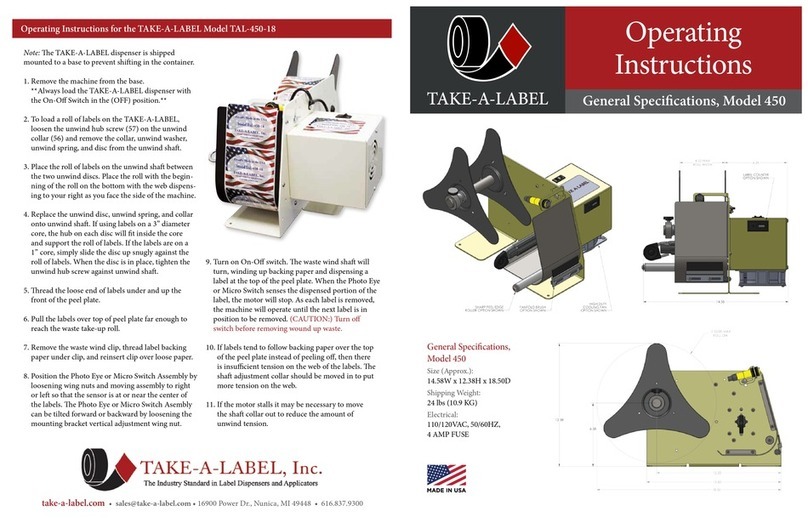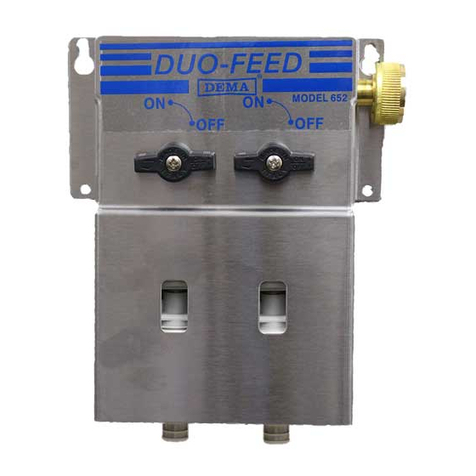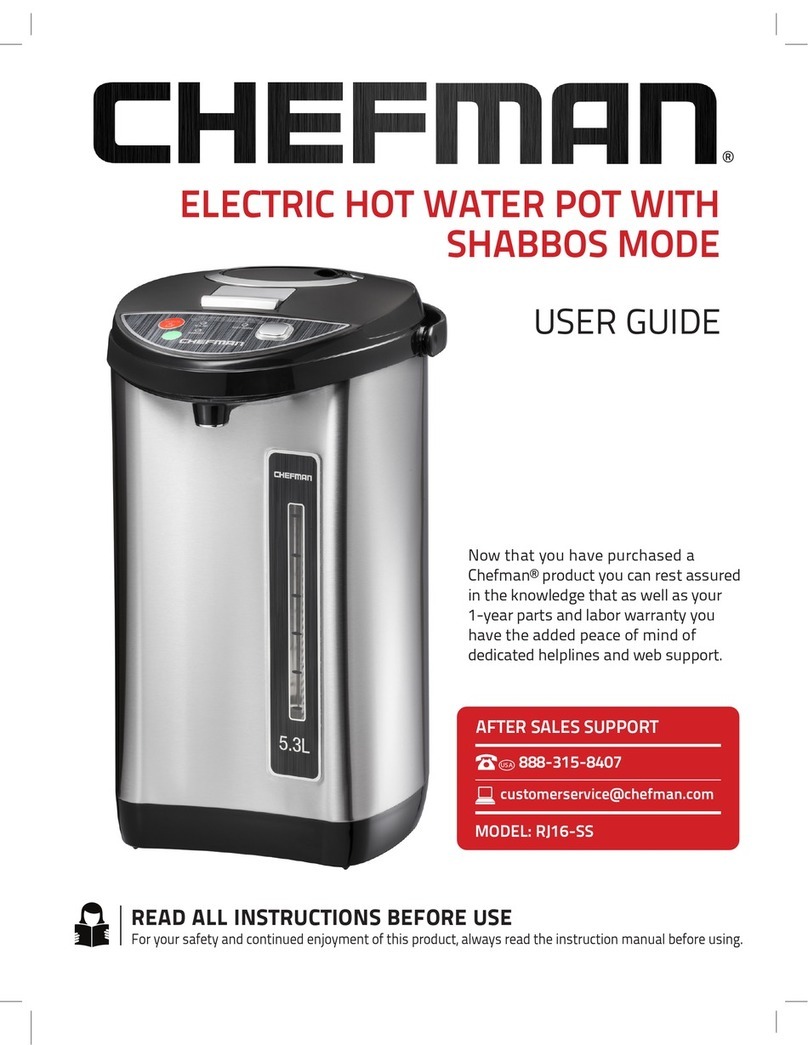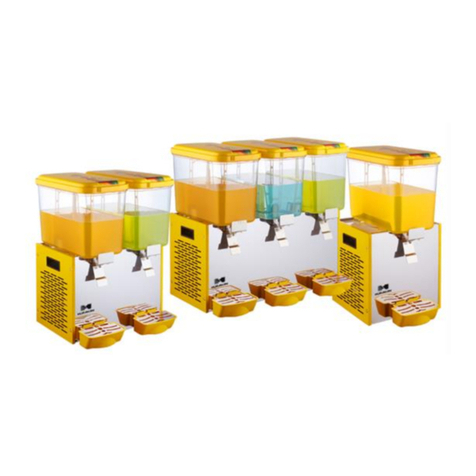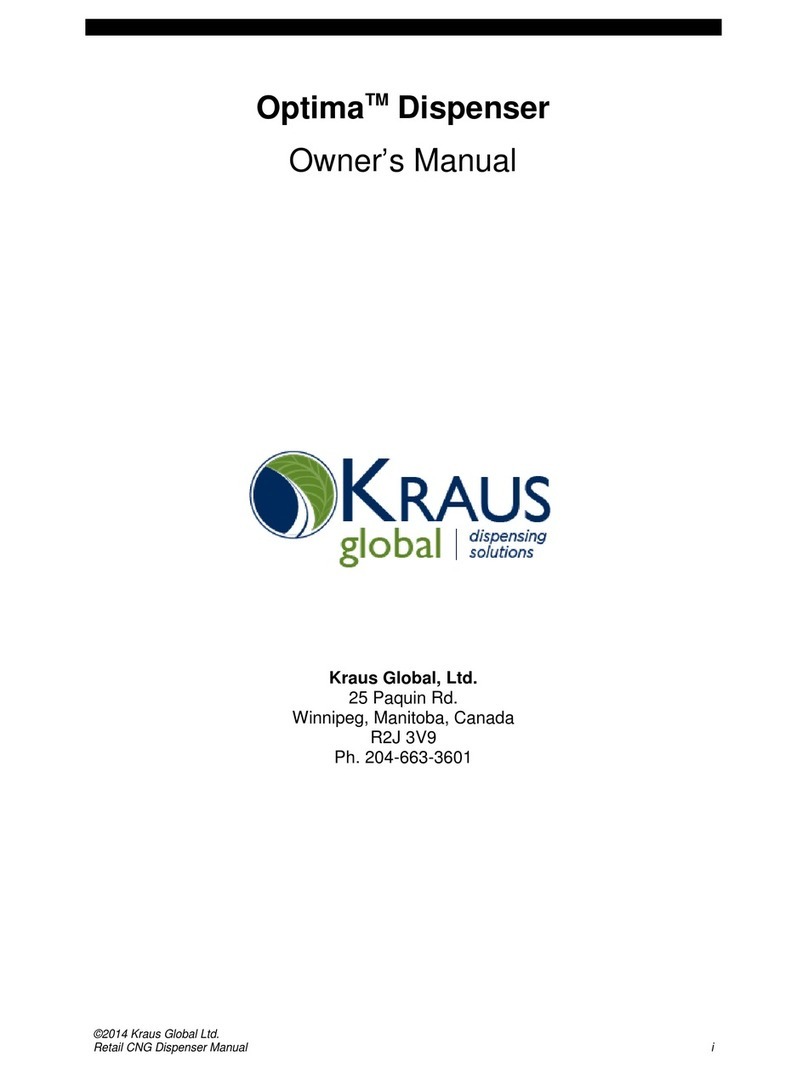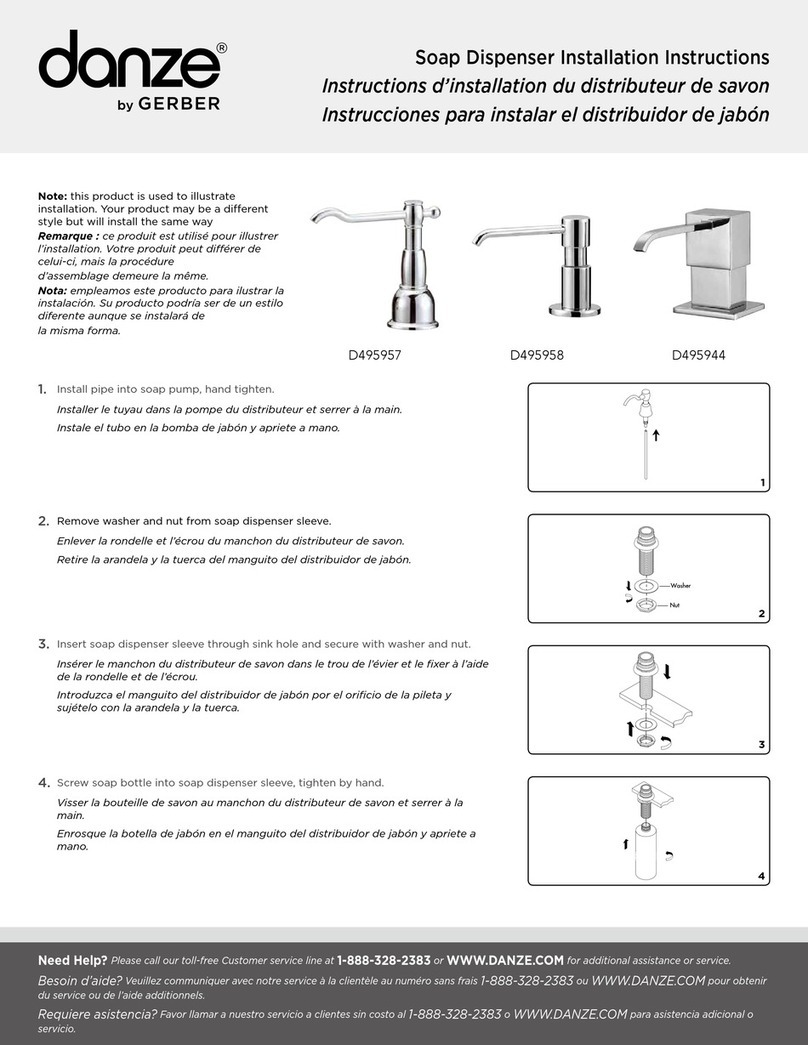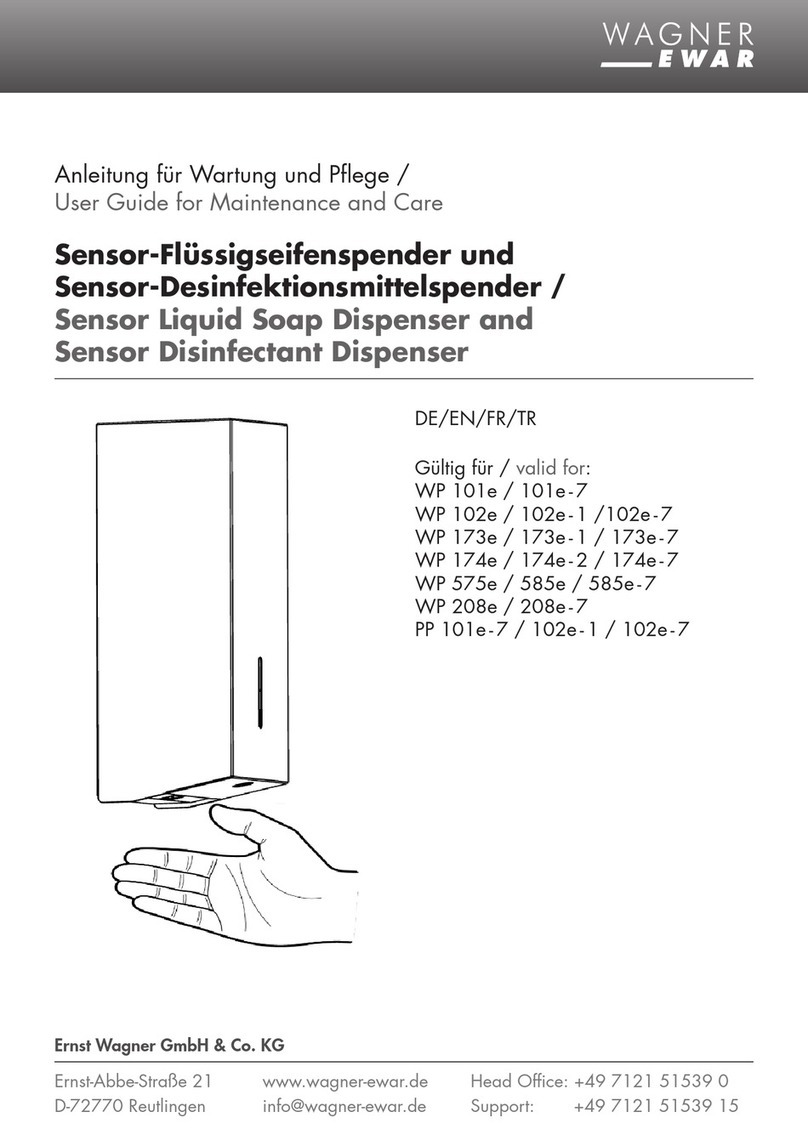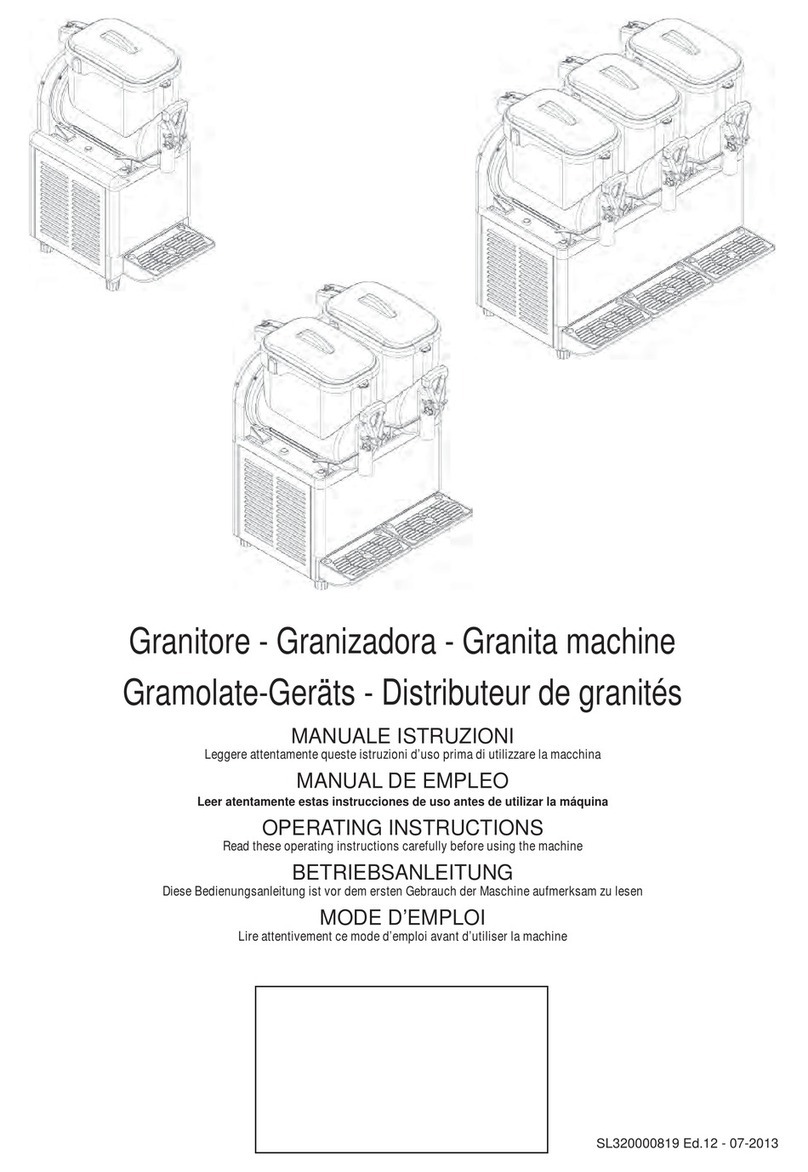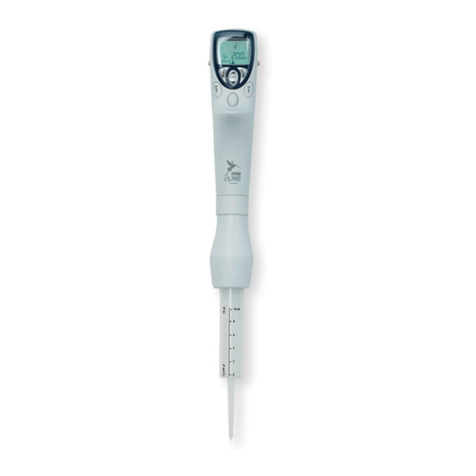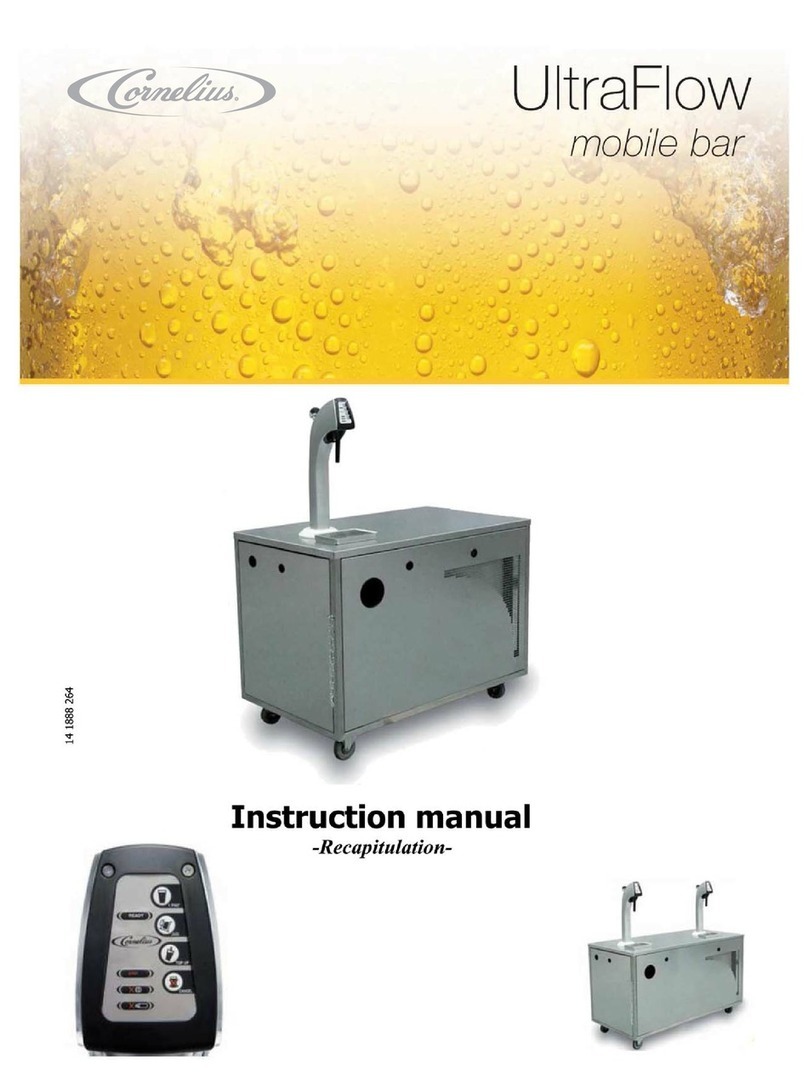2. Reset the unit by unplugging and re-connecting power.
3. Verify that the auger is clean and is able to move freely by removing
the hopper and manually rotating the auger.
4. Ensure that the motor coupler is securely attached to the motor shaft
by removing the hopper and twisting it. If the coupler is firmly
attached, the motor/gearbox can be heard and felt to rotate. If it is
loose it may rotate freely or pull off easily and should be corrected by
tightening the coupler attachment screw.
Note:. When installing or tightening a coupler, make sure that the
coupler is pushed back to the plastic spacer but not tight enough to
restrict the coupler from rotating freely.
Note: In newer models the coupler can only be installed with the
clamping screw parallel to the flat side of the shaft.
5. If the coupler does not rotate smoothly and freely then it is possible
that the motor/gearbox assembly is damaged and may need to be
replaced. To verify this, re-position the coupler by loosening and re-
tightening it as described in the note above. If the coupler is still
unable to turn then the motor assembly may have to be replaced.
6. Ensure that the motor is securely attached to the chassis by trying to
move the coupler side-to-side with the hopper removed. If it is loose,
tighten it and retest.
If the “Dispensing…” message persists for several seconds after the
dispense cycle has completed it is an indication that the rotary encoder
on the back of the motor assembly has become loose. To verify that this
is the problem:
7. Try dispensing several sizes of the same product. If the rotary
encoder is loose then all sizes will dispense approximately the same
amount of product. Also, the dispense cycle sounds different. Rather
then a sharp starting and stopping of the motor, the motor stops
slowly over a second or two at the end of dispense. In addition, in
units where the motors have a reverse rotation at the end of
dispense, the reverse portion of the dispense cycle is missing which
can be heard by the lack of the extra motor activation at the end of
each dispense.
8. Remove the left or right side cover and remove the hopper.
9. Holding the motor coupler with one hand, try moving the disk on the
rear of the motor shaft. It should only allow a small amount of rotation
before the coupler turns (the gearbox has a 10:1 ratio) and it should
not permit any axial movement on the shaft. See Figure 6 on page 9
for view of rotary encoder.
Note: Care should be taken not to disrupt the dipswitch on the motor
circuit card as any change in the dipswitch settings will cause the unit
to malfunction. The dipswitch is on the left hand side of the card (as
viewed from the front of the unit looking back) near the bottom of the
card. See page 9 for illustration of dipswitch.
If this examination is inconclusive the motor may need to be removed
for closer examination. If the rotary encoder is loose the motor
assembly will have to be replaced.





















